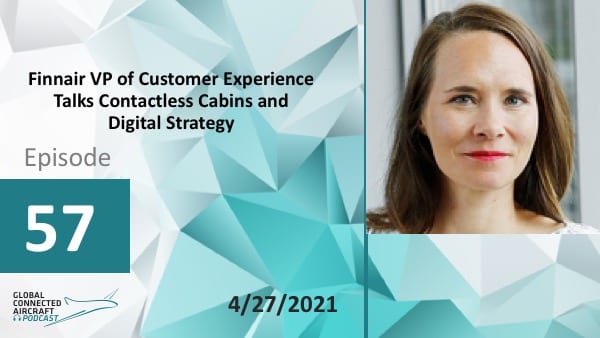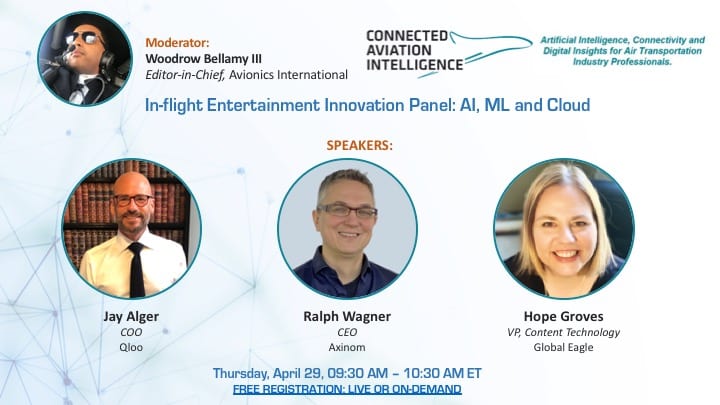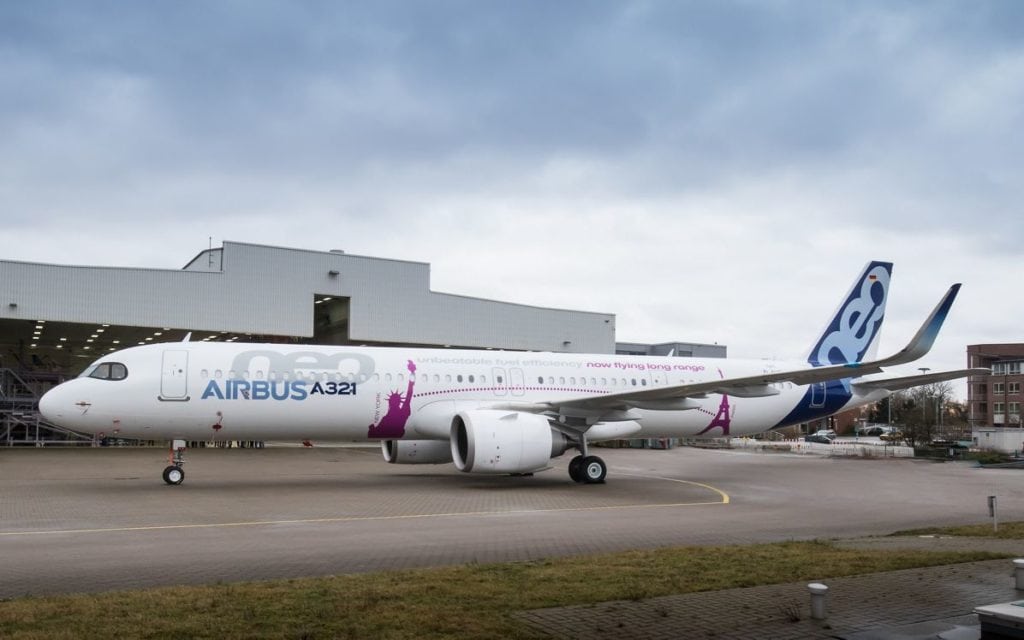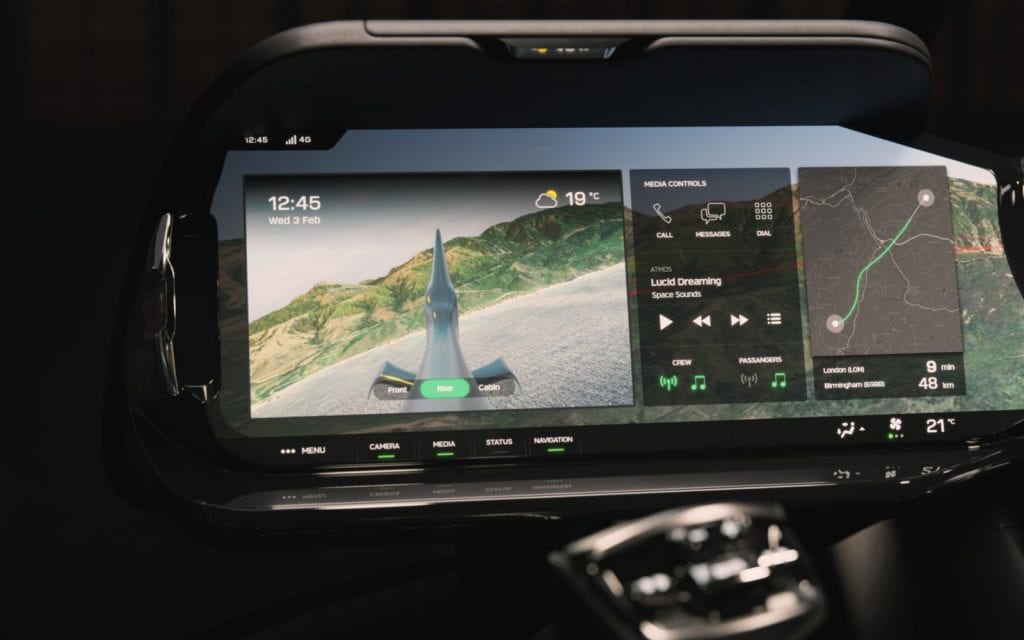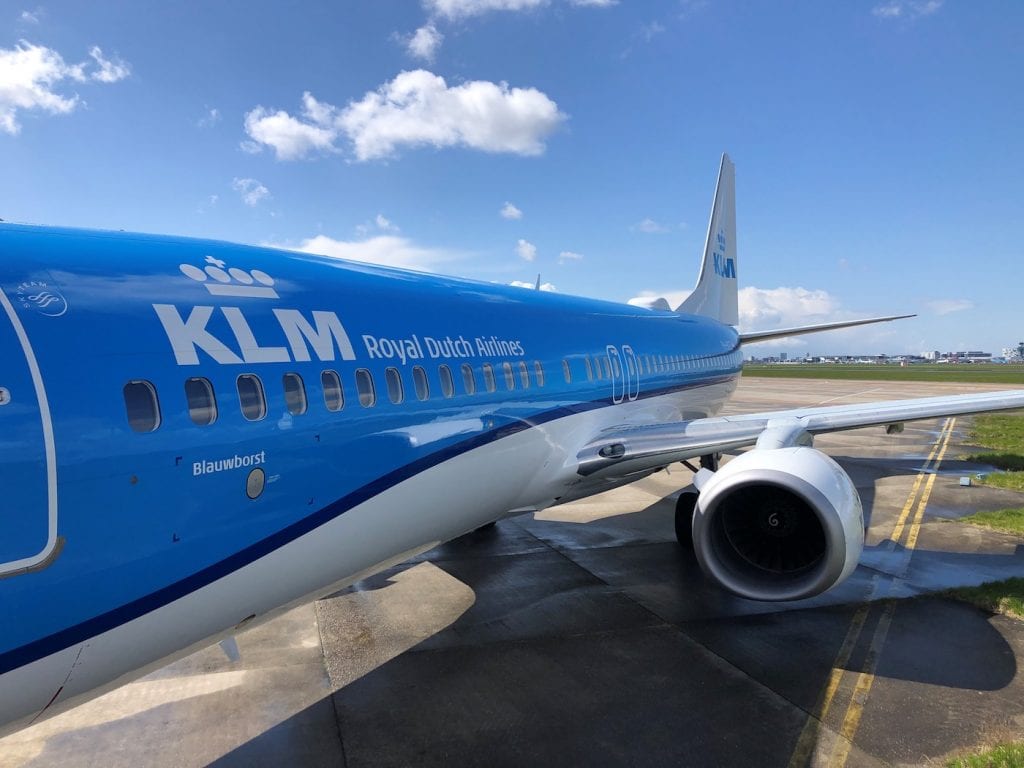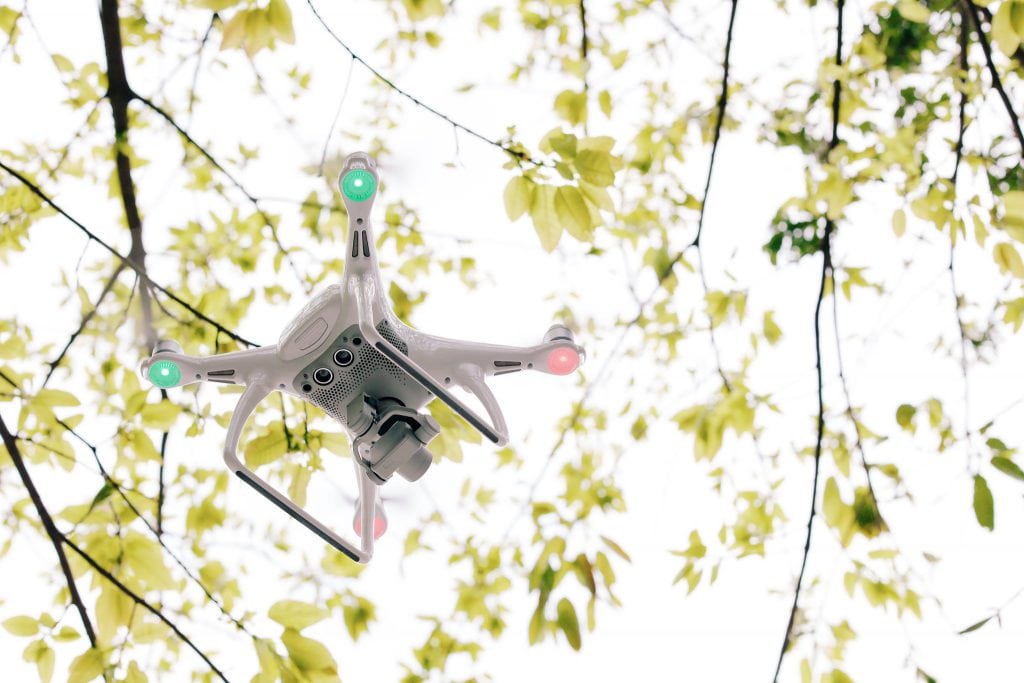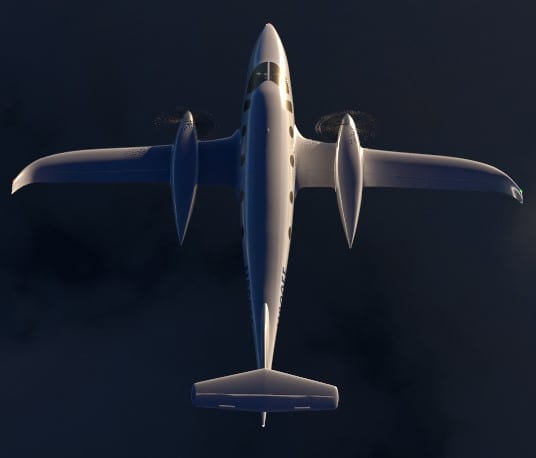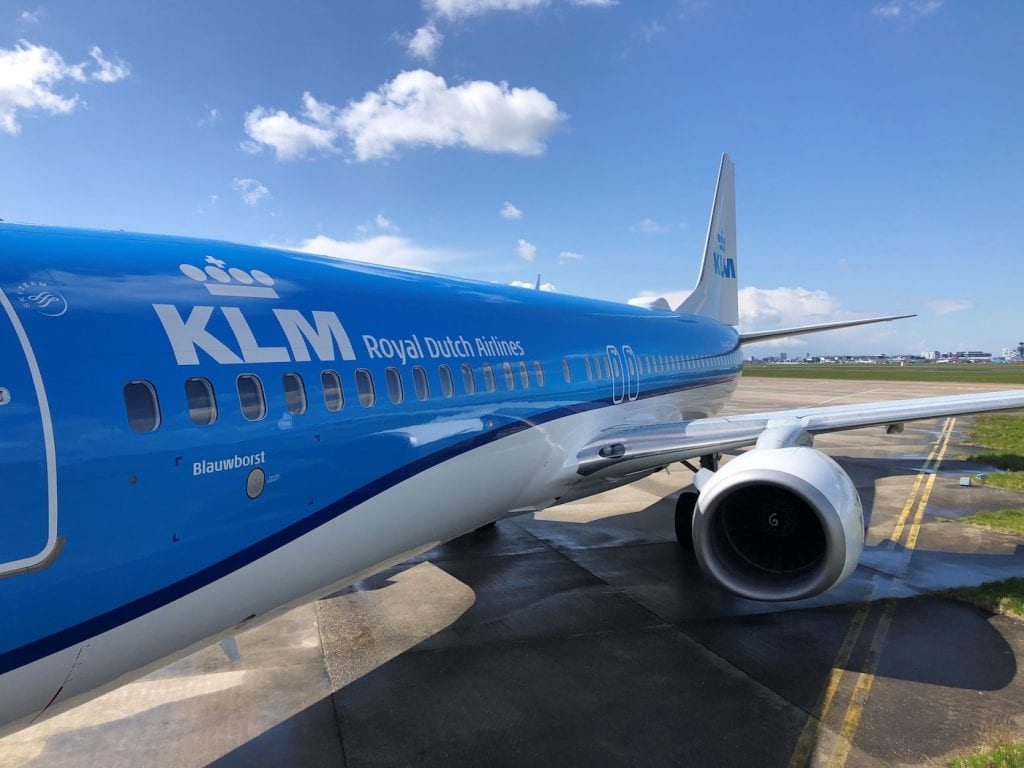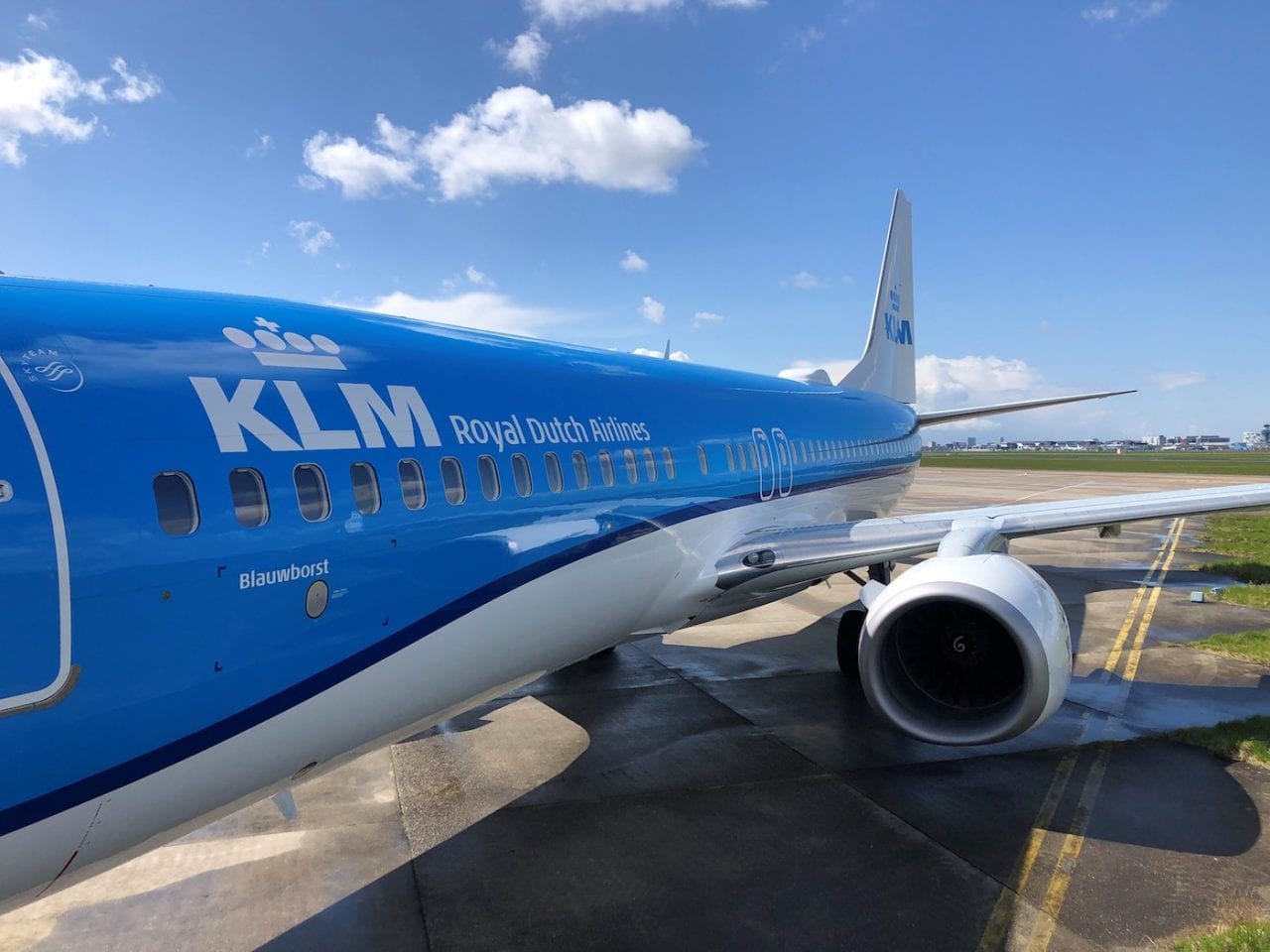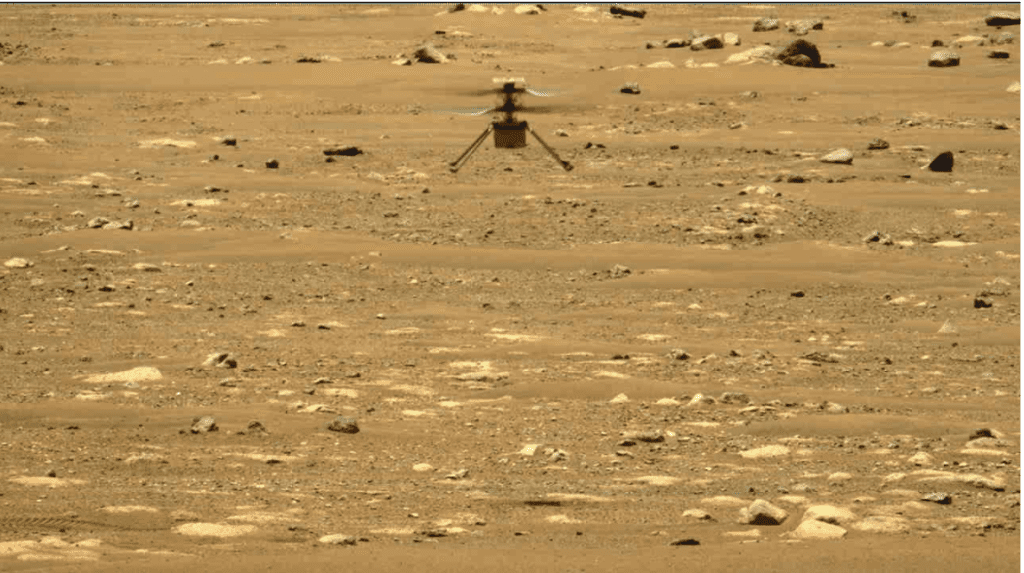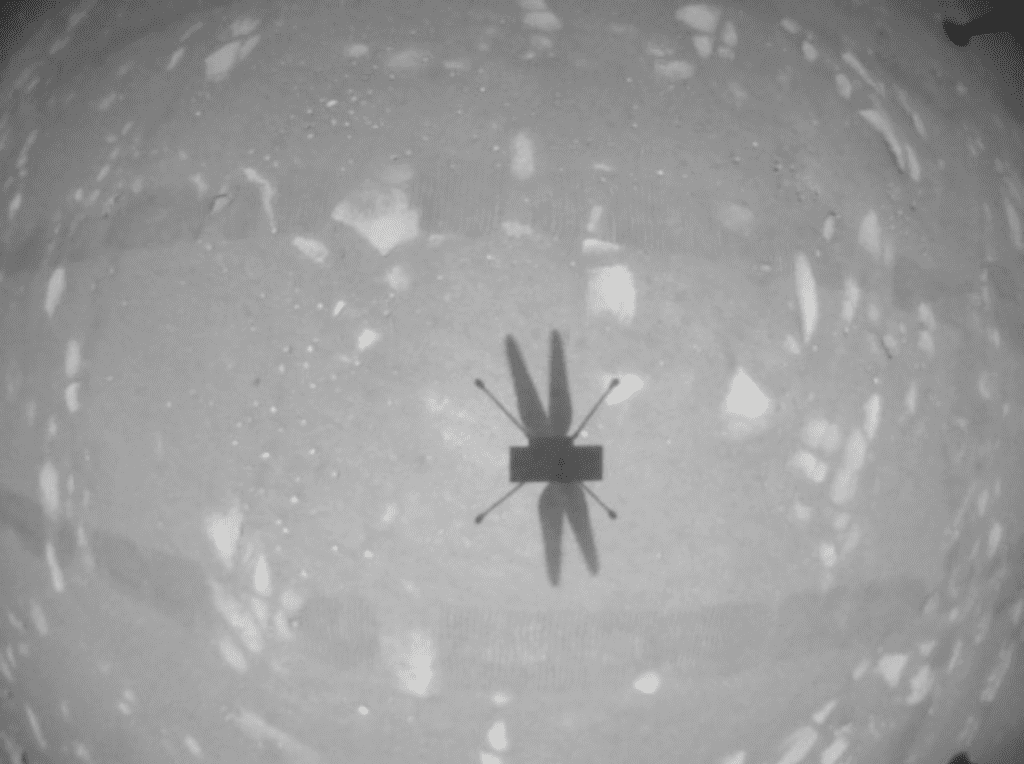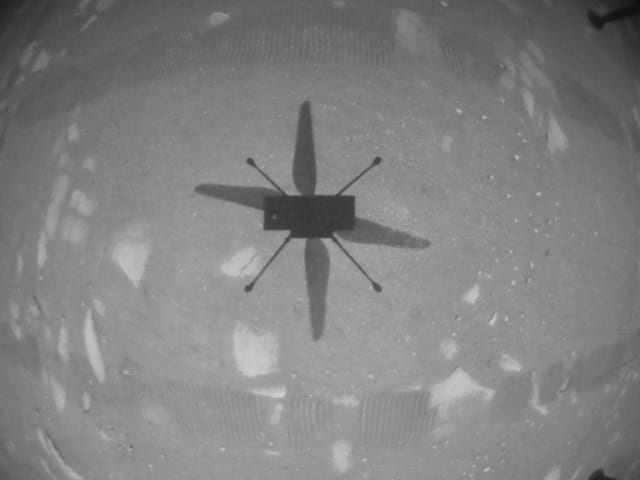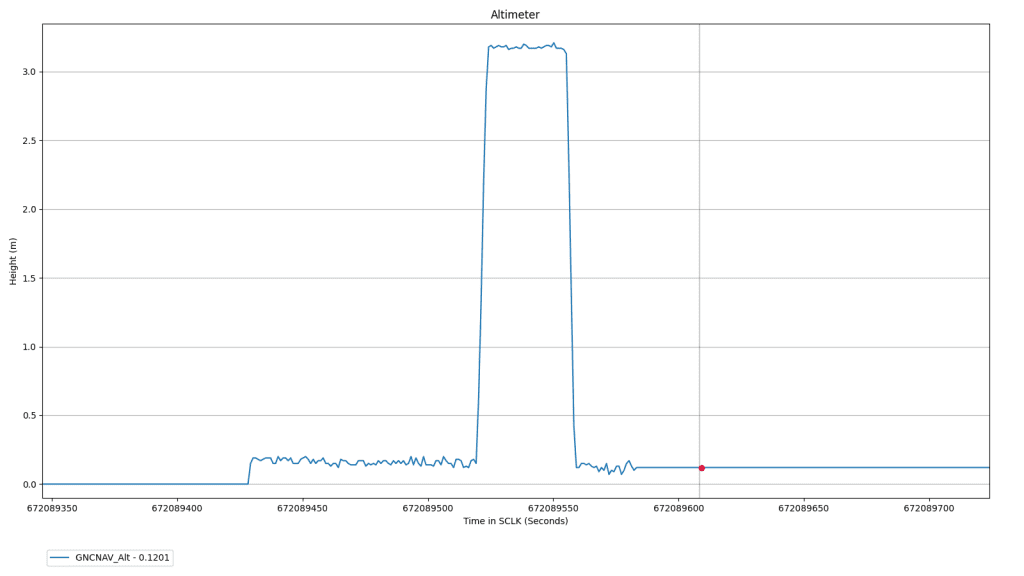
Check out the April 18 edition of What’s Trending in Aerospace, where editors and contributors for Avionics International bring you some of the latest headlines and updates happening across the global aerospace industry.
Commercial
New CDC Study Shows Keeping Middle Seat Open Helps Reduce Risk of COVID Exposure on Airplanes

(Delta Air Lines)
A new study published by the Centers for Disease Control (CDC) and Kansas State University attempts to quantify the benefit of specific distancing strategies to prevent transmission, such as keeping aircraft cabin middle seats vacant on airline flights.
Using bacteriophage MS2 virus as a surrogate for airborne SARS-CoV-2, CDC and Kansas State University (KSU) modeled the relationship between SARS-CoV-2 exposure and aircraft seating proximity, including full occupancy and vacant middle seat occupancy scenarios, according to the study.
“Compared with exposures in full occupancy scenarios, relative exposure in vacant middle seat scenarios was reduced by 23% to 57% depending upon the modeling approach. A 23% exposure reduction was observed for a single passenger who was in the same row and two seats away from the SARS-COV-2 source, rather than in an adjacent middle seat,” the study says.
Researchers analyzed data on virus aerosol dispersion in aircraft cabin mock-ups from a previous study conducted at KSU during July–August 2017 as part of a pandemic influenza research initiative, according to the study. These data were used to establish a “regression model to estimate the reduction in aerosol concentration as distance from a source increased,” the study says.
“These regression models were applied to conceptual aircraft seating scenarios to simulate the reduction in exposure resulting from vacant middle seats in an aircraft cabin,” the study says. “During the aerosol dispersion study at KSU, mannequins with realistic passenger heat emission were seated in the cabin mock-ups, and then MS2 aerosol was introduced from a source location and collected at six different sample locations in the cabin. This process was repeated four times: twice in a single-aisle cabin and twice in a twin-aisle cabin.”
Boeing Reports First Quarter 2021 Deliveries

Boeing reported major aircraft program deliveries across its commercial and defense operations on April 13.
The company completed a total of 77 commercial aircraft deliveries, including 63 total 737s. Boeing will release its full first quarter results on April 28.
Qantas Reports on Return of Passenger Demand in Australia

(Jetstar)
Qantas reported a strong return for domestic air travel demand in an April 15th update noting some of its regional subsidiary carriers will start re-deploying aircraft.
According to the update, Qantas is seeing demand return for leisure travel regionally, and has also engaged several regional travel agreements with other nations including New Zealand.
Qantas Group CEL Alan Joyce said the Australian government’s “half-price fares” program is also helping to restore passenger demand.
“The direct response to the program has been fantastic, with over 250,000 fares sold in the first two weeks,” Joyce said. “Indirectly, we saw a big spike in travel demand before the fares even went on sale because the announcement itself gave people confidence, which is something that had been missing for months. Corporate travel, including the small business segment, is now back to around 65 per cent of pre-COVID levels, and increasing month-on-month.”
Connectivity
Court of Justice Rules Against Eutelsat’s European Aviation Network Claims

The European Aviation Network concept of operations.
The European Court of Justice issued a ruling dismissing Eutelsat’s claim that Inmarsat’s operation of its European Aviation Network is an infringement on European law.
According to a summary of the ruling published by the EU Court of Justice on April 15, the claim by Eutelsat stemmed from EU’s selection procedure process for operators of mobile satellite systems. Eutelsat in 2014 a competitor of Inmarsat, brought an action before the Conseil d’État (Council of State, France) seeking annulment of a decision by that council to allow Inmarsat to operate EAN with a satellite and ground component, the latter of which is operated in partnership with Deutsch Telekom.
“Ruling on a request for a preliminary ruling from the Conseil d’État, the Court of Justice, in its judgment, provides an interpretation of ‘mobile satellite systems’ and of the concepts of ‘CGC’ and ‘mobile earth station’ 4 in the light of the MSS decision. In addition, the Court provides clarification concerning the powers of the competent authorities of the Member States to grant, or to refuse to grant, to an operator the authorizations necessary for the provision of the components of mobile satellite systems,” the ruling notes.
Inmarsat published an April 15 press release describing the allegations made by Eutelsat as “filed with the sole intention of artificially creating legal and regulatory uncertainty around EAN.”
“Inmarsat welcomes the ruling of the European Court of Justice rejecting our competitors’ arguments aimed at limiting the operation of the European Aviation Network,” Brad Swann, Inmarsat General Counsel said in the release.
Check out the full Court of Justice ruling here.
Military
Two Flight Demonstrations from Sikorsky S-97 RAIDER
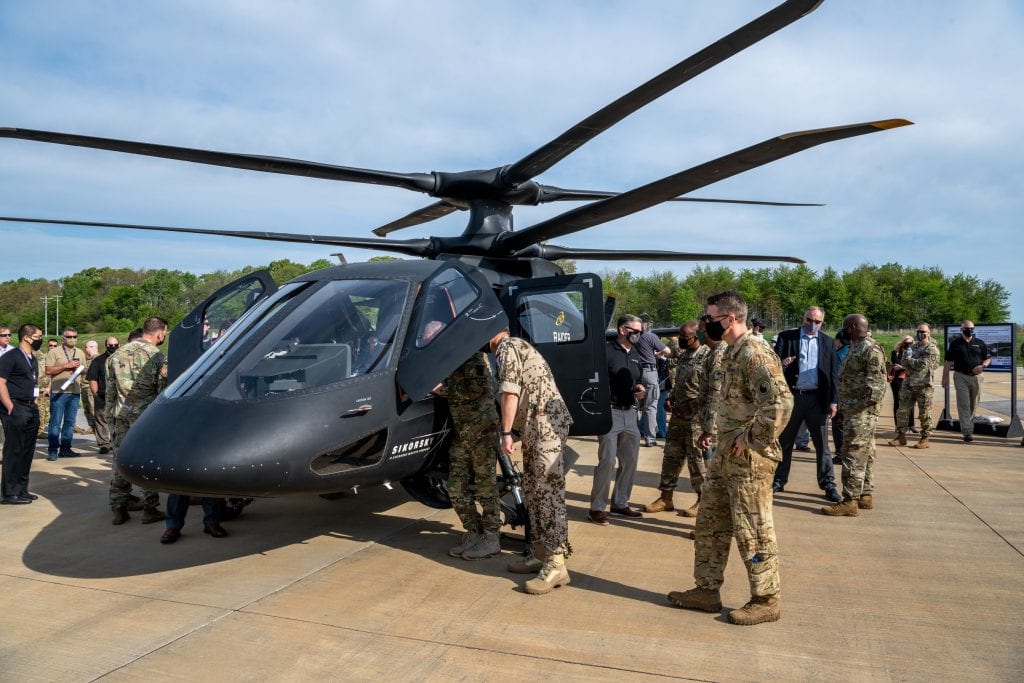
Sikorsky’s Future Vertical Lift aircraft like RAIDER are designed to provide U.S. Army commanders with information to self-diagnose maintenance and predict aircraft availability. That increases the operational readiness and availability and reduces life cycle costs associated with the aircraft. (Photo courtesy Sikorsky, a Lockheed Martin Company.)
Lockheed Martin’s Sikorsky S-97 RAIDER helicopter flew two flight tests for Army officials and soldiers at Redstone Arsenal in Huntsville, Alabama this week, according to an April 15 release from the company.
The S-97 is Lockheed’s big for the Army’s Future Attack Reconnaissance Aircraft (FARA) program which is part of the Future Vertical Lift (FVL) effort.
“Since the first Black Hawk took to the skies in the 1970s, to when our teams broke helicopter speed records with X2 Technology in 2010, we have been working with our Army partners to develop and deliver low-risk, transformational, affordable and sustainable aircraft to support the warfighters’ missions,” Sikorsky President Paul Lemmo, who was at Redstone this week, said in a statement. “This is the first of what we believe will be many times our X2 Future Vertical Lift aircraft will fly at Redstone.”
According to the release, the flights demonstrated the aircraft’s low-level maneuverability and high-speed capabilities.
“Flying RAIDER continues to amaze me,” Sikorsky’s Christiaan Corry, a former U.S. Marine with more than 4,500 flight hours in 25 types of aircraft and test pilot for the demonstration, said in a statement. “The combination of the coaxial rotors and the propulsor are really the enablers for this transformational technology. As we demonstrated today, in low-speed flight we are as capable as a conventional helicopter, but when we engage the prop, we are able to operate in a whole new way – it’s much more like flying an airplane.”
Honeywell Introduces New Navigation Technology Alternatives to GPS
Honeywell presented three new navigation technologies to use in GPS denied environments, according to an April 15 release.
The technologies include vision-aided navigation which uses live optical or infra-red camera feed and maps, celestial-aided navigation which uses stars and reference objects orbiting earth, and magnetic anomaly-aided navigation which uses sensors to measure magnetic strength with known magnetic maps, according to the release.
“Most of us have experienced some level of GPS unavailability, perhaps on our mobile phones or car navigation systems. It’s a minor inconvenience for us, but for military operations, not having access to critical positioning and timing information can make or break a mission,” Matt Picchetti, vice president and general manager of Navigation & Sensors at Honeywell Aerospace, said in a statement. “We’re very excited to roll out this robust lineup of alternate navigation solutions, which are specifically designed to address the needs of our military customers and give them the added layers of redundancy needed to successfully carry out their operations, even if they lose access to GPS signals.”
These new systems will be available in 2022 with deliveries starting in 2023, according to the release.
French Government Buys More Helicopters

As part of a stimulus plan, the French military is purchasing Airbus helicopters. (Airbus)
The French Armament General Directorate (DGA) has signed a contract for eight H22Ms, a VSR700 prototype, two H145s and 10 H160s as part of a stimulus plan to support the national aeronautical industry, according to an April 15 announcement from Airbus Helicopters.
“We are very thankful to the French government for their support of the aeronautical industry through the Stimulus plan,” Bruno Even, Airbus Helicopters CEO, said in a statement. This is a win-win situation as the aircraft fulfill a real operational need for the French armed forces and this order allows Airbus Helicopters to secure jobs and key skills in the medium term. The French armed forces are facing increasing and varied challenges and I am confident that the H225M, thanks to its excellent range and multirole capacity, will be an efficient and reliable asset that will enhance their operations at home and abroad. The VSR700 is also a crucial program. It will provide the French Navy with a highly capable autonomous platform and it will pave the way for future unmanned systems within the Airbus Helicopters portfolio.”
The two H225Ms will go to the French Air and Space Force and the VSR700 prototype is being developed by the French Navy with the Naval Group, according to the release. The two H145s will do to the Sécurité Civile and the 10 H160s will be used by the French Gendarmerie Nationale.
10 Starlink Satellites to Enhance Arctic Communications for NORTHCOM
The January launch of 10 SpaceX Starlink polar orbit satellites are to enhance the communications for U.S. military forces in the Arctic, and Air Force Gen. Glen VanHerck, the head of U.S. Northern Command (NORTHCOM) and the North American Aerospace Defense Command (NORAD), told lawmakers this week that he hopes to have another 100 satellites for such communications in the future.
SpaceX and OneWeb are building such commercial, polar orbit satellites.
“To compete in the Arctic, you have to be on the field,” VanHerck said in response to a question from House Armed Services Commitee Chairman Adam Smith (D-Wash.) on the Arctic competition with Russia during an Apr. 14 hearing. “Currently…we’re not able to have the persistence I need to compete day-to-day in the Arctic. My priorities start with domain awareness, the ability to communicate and provide data and information so that we can operate and have persistence in the Arctic…We’ve got 10 satellites on orbit and approximately 100 more in the future.”
TransDigm To Sell Airborne Components Business Unit To Private Equity Firm

The Belgium-based Technical Airborne Components (TAC) business unit of TransDigm is being sold to a private equity firm.
TransDigm Group Inc.’s Belgium-based Technical Airborne Components (TAC) business unit on Tuesday said it has agreed to be acquired by the private equity firm Searchlight Capital Partners.
Terms of the deal were not disclosed.
TAC, which has about 170 employees, manufactures rods and struts for commercial aircraft, regional and business jets, helicopters, military aircraft and rockets. Some of the company’s customers include Airbus Group, Leonardo, Dassault, Eurofighter, Embraer and Arianespace.
“We are delighted to be partnering with TAC and its management team and look forward to drawing upon our industry and operational expertise as well as our transatlantic presence to accelerate its growth,” Ralf Ackermann, partner at Searchlight, said in a statement. “This investment further demonstrates our belief in the long-term recovery of the aerospace sector.”
Business & GA
Gulfstream’s First Fully-Outfitted G700 Joins Certification Flight Testing Program
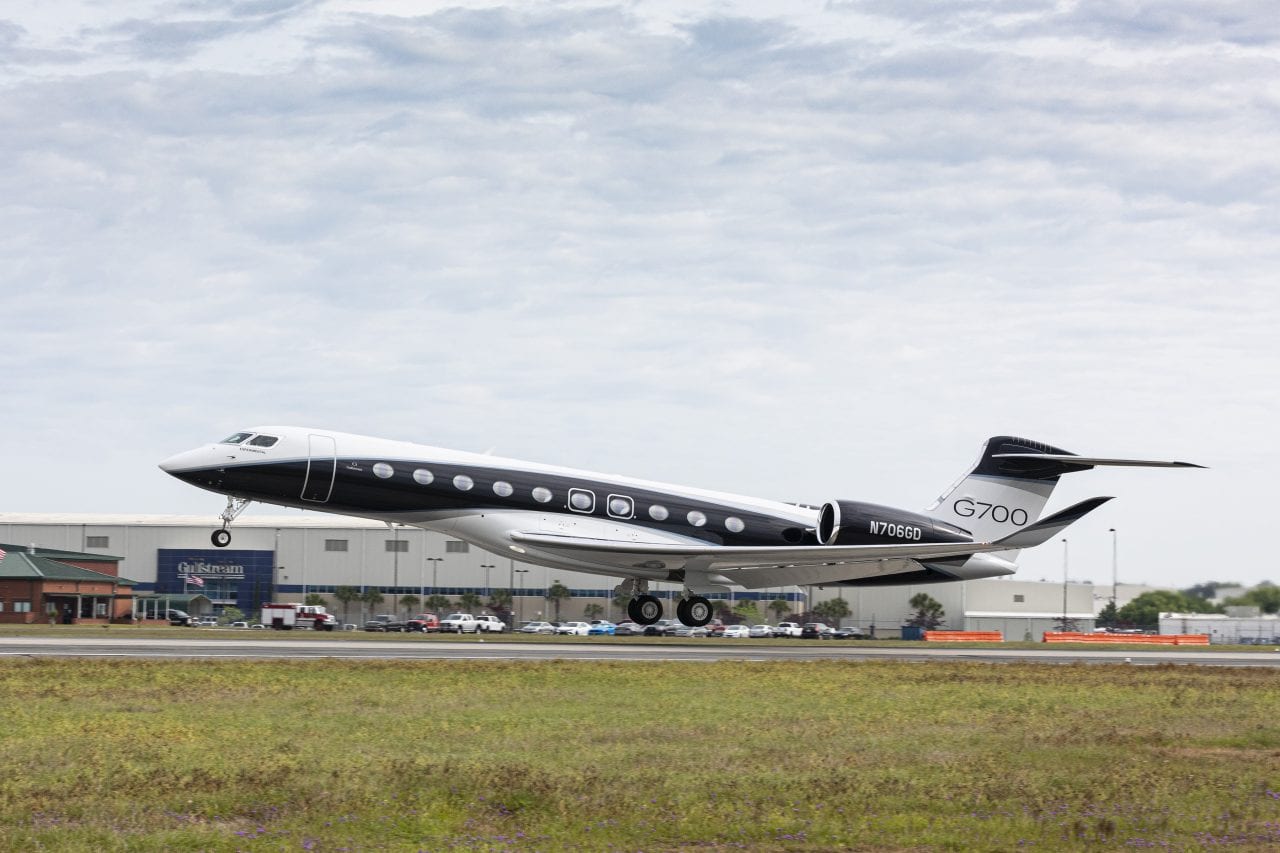
The first fully-outfitted Gulfstream G700 joins the aircraft’s type certification flight testing program. (Gulfstream Aerospace)
In an April 15 press release, Gulfstream confirmed its first fully-outfitted G700 completed its first flight, joining five other flight test campaign aircraft as the new long range jet marches toward type certification. The fully outfitted aircraft took off today and flew 3 hours and 36 minutes, reaching an altitude of 48,000 feet/14,630 meters and a top speed of Mach 0.935, according to Gulfstream.
“Flying a fully outfitted aircraft signals significant progress in the G700 flight-test program,” Mark Burns, president, Gulfstream said in the release. “The G700 interior is raising the bar for cabin innovation and customization. It provides more space than ever before for Gulfstream’s precision-crafted furnishings, more opportunity for personalization and more technology to optimize passenger health, safety and enjoyment.”

The Gulfstream Cabin Experience on this G700 test aircraft includes the all-new ultrahigh-definition circadian lighting system and the first “ultra galley” to be featured on a Gulfstream jet, according to the company. Other interior cabin elements and features include more than 10 feet of counter space; a dedicated crew space; an entertainment and presentation area; a six-place conference and dining area; and a state room.
eVTOLs
China Establishes Type Certification Team for Passenger Variant of Ehang’s EH216

The Civil Aviation Administration of China has established a new type certification team for Ehang’s EH216 autonomous aerial vehicle. (Ehang)
The Civil Aviation Administration of China established a “type certification” (TC) team for Guangzhou-based EHang’s development of its EH216 autonomous aerial vehicle (AAV). The kickoff meeting was held in Guangzhou on April 13-14 with the aim to officially advance the TC approval work of EH216, according to an April 16 press release.
EHang officially submitted the EH216 type certificate application to CAAC in December 2020, which was accepted by CAAC in January 2021.
“Unmanned aviation is an integral part of the construction of intelligent civil aviation and may become the primary form of transportation in the future. THE Government and companies should work together to promote the development of unmanned aerial vehicles and adhere to high-quality standards when building the civil aviation infrastructure. Both the applicant and CAAC should have innovation mindset in the certification process while benchmarking international standards,” CAAC’s Chief Engineer Shijun Yin said in the release.
EHang also published its full-year and fourth quarter 2020 results on Friday.
Unmanned
All Nippon Airways Partners with Wingcopter to Bring Drone Delivery to Japan
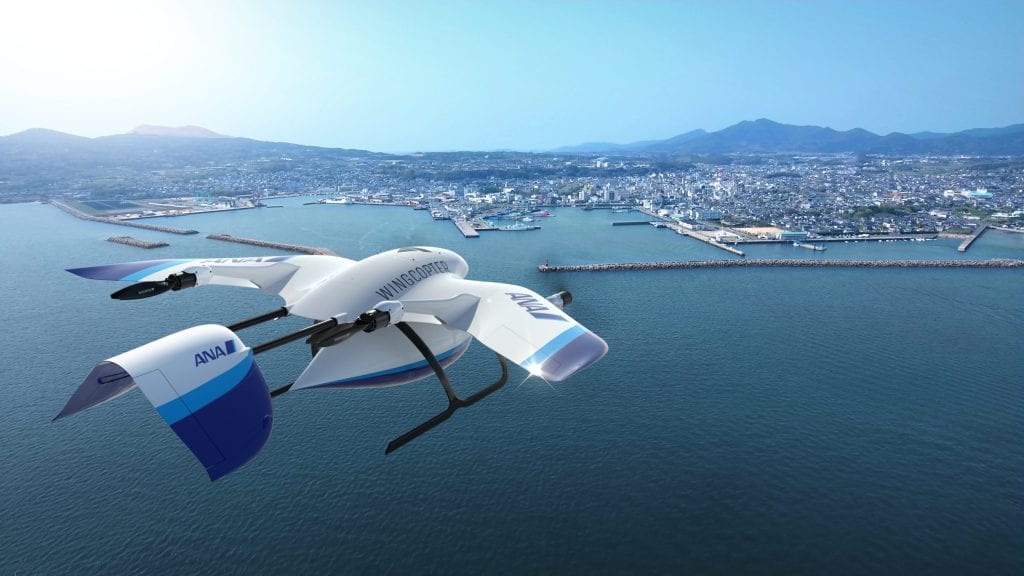
Wingcopter’s drone has a range of 120 km and has been tested in harsh weather conditions. (Wingcopter)
ANA HOLDINGS INC. (ANA HD), the parent company of All Nippon Airways, and Wingcopter have formed a new partnership to build a drone delivery network for pharmaceuticals and other consumer goods in Japan, according to an April 15 release.
The project will use Wingcopter’s drone which has vertical take-off and landing capabilities while also taking advantage of fixed-wing architecture for flight mode by using a tilt-rotor mechanism, according to the company’s website. Wingcopter will also provide pilot training, mission planning, operational design, and maintenance.
“Being able to help a global company like ANA open up new business areas and at the same time pursue our mission to save and improve lives, is what we tirelessly work for,” Tom Plümmer, CEO of Wingcopter, said in a statement. “We are really looking forward to the next steps and the overall partnership with ANA in Japan and beyond.”
The post What’s Trending in Aerospace – April 18, 2021 appeared first on Aviation Today.
Check FastApn access for commercial satcoms at Fastapn
Flytlink – Avionics, Satcom’s and IFE Consultants
